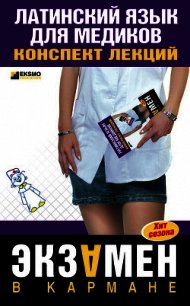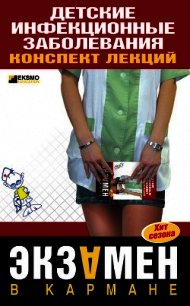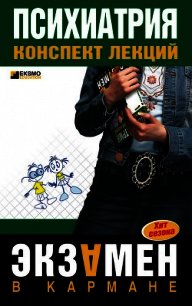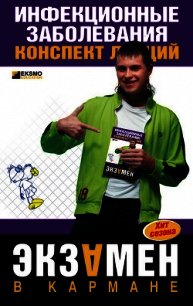Английский язык для медиков: конспект лекций - Беликова Елена (книги хорошем качестве бесплатно без регистрации .txt) 📗
4) a) hair; b) head; c) foot;
5) a) lamp; b) organ; c) tissue.
ЛЕКЦИЯ № 27. Mechanics of breathing
Muscles of respiration: inspiration is always an active process. The following muscles are involved: The diaphragm is the most important muscle of inspiration. It is convex at rest, and flattens during contraction, thus elongating the thoracic cavity. Contraction of the external in-tercostals lifts the rib cage upward and outward, expanding the thoracic cavity. These muscles are more important for deep inhalations. Accessory muscles of inspiration, including the scalene (elevate the first two ribs) and sternocleidomastoid (elevate the sternum) muscles, are not active during quiet breath ing, but become more important in exercise. Expiration is normally a passive process. The lung and chest wall are elastic and naturally return to their resting positions after being actively expanded during inspiration. Expiratory muscles are used during exercise, forced expiration and cer tain disease states. Abdominal muscles (rectus abdominis, internal and exter nal obliques, and transversus abdominis) increase intra-abdominal pressure, which pushes the diaphragm up, forc ing air out of the lungs. The internal intercostal muscles pull the ribs downward and inward, decreasing the thoracic volume. Elastic properties of the lungs: the lungs collapse if force is not applied to expand them. Elastin in the alveolar walls aids the passive deflation of the lungs. Collagen within the pulmonary in-terstitium resists further expansion at high lung volumes. Compliance is defined as the change in volume per unit change in pressure (AV/AP). In vivo, compliance is measured by esophageal balloon pres sure vs. lung volume at many points during inspiration and expiration. Each measurement is made after the pressure and volume have equilibrated and so this is called static compli ance. The compliance is the slope of the pressure-volume curve. Several observations can be made from the pressure-volumecurve.
Note that the pressure-volume relationship is different with deflation than with inflation of air (hysteresis). The compliance of the lungs is greater (the lungs are more distensible) in the middle volume and pressure ranges.
At high volumes and expanding pressures, the compliance is lower (the lungs are stiffer). Even when the lung has no expanding pressure, some air remains in the lungs. When saline is used to fill the lung, compliance is much greater (small pressure changes bring about large changes in volume). With saline inflation, there is little difference in the pressure-volume relationship with inflation or defla tion. This indicates that the differences seen between infla tion and deflation of air must be due to surface forces in the air-liquid interface of the alveoli.
Causes of decreased compliance: pulmonary fibrosis, pulmonary venous congestion and edema, deficiency of surfactant. Causes of increased compliance: emphysema, age.
New words
muscles – мускулы, мышцы
respiration – дыхание
inspiration – вдох
always – всегда
process – процесс
following – следующий
to be involved – быть вовлеченным
diaphragm – диафрагма
the most – наиболее
important – важный
inspiration – вдохновение
convex – выпуклый
rest – отдых
to flattens – сглаживаться
contraction – сокращение
elongating – удлинение
the thoracic cavity – грудная впадина
the thoracic – грудная клетка
the rib cage -грудное ребро
upward – вверх
outward – наружу
expanding – расширение
volume – объем
compliance – согласие
some – некоторые
to remain – остаться
saline – солончак
to fill – заполняться
Сравните следующие предложения.
1. After dinner he drank some juice. – После обеда он выпил некоторое количество сока.
2. He does not drink milk after dinner, he drinks juice. – Он не выпил молока после обеда, а выпил сок.
3. I brought some books from the library. – Я взял некоторое количество книг в библиотеке.
4. I like books. – Я люблю книги.
Зставьте some, any, no или оставьте пропуски незаполненными, ориентируясь по смыслу.
1. There is… ink in my pen.
2. Is there. snow in the treet this morning?
3. My mother likes… musik.
4. Are there. chess-players here?
5. There are. diagrams in the new book.
6. Are there. newspapers on the table?
7. Was there. water in the glass or… milk?
8. There was. soap in the box; he used wash his hands.
9. There was. soap in the box: it smells of. soap.
10. There are… letters for you on the table.
11. Do you like… apples?
12. Were there. of our teachers at the stadium?
13. There were. students of our group at the consultation yesterday.
14. Will there be… concerts at the club next month?
15. There were. yellow and green pencils on the table.
16. People need… oxygen for breathing.
17. Are there. mistakes in my dictation?
18. There are. juice in your cup.
19. My brother doesn't like. carrots.
20. I have. books now.
Answer the questions.
1. Is inspiration always an active process?
2. What muscles are involved in the mechanism of breathing?
3. What muscle is the most important of inspiration?
4. What does contraction of the external intercostals lift?
5. What muscles are more important for deep inhalations?
6. What muscles are not active during quiet breathing?
7. Is expiration normally a passive process?
8. Are the lung and chest wall elastic?
9. Where are expiratory muscles used in?
10. Where do the internal intercostal muscles pull the ribs?
Make the sentences of your own using the new words (10 sentences).
Make your own sentences using SOME, ANY, NO, EVERY (10 sentences).
Find one word, which is a little bit different in meaning from others (найдите одно слово, которое немного отличается от других по смыслу):
1) a) air; b) muscles; c) organs;
2) a) eyes; b) brows; c) arms;
3) a) teeth; b) tongue; c) ligament;
4) a) coccyx; b) pelvis; c) shoulder;
5) a) elbow; b) arm; c) ear.
ЛЕКЦИЯ № 28. Surface tension forces
In a liquid, the proximity of adjacent molecules results large, inter-molecular, attractive (Van der Waals) forces that serve to stabilize the liquid. The liquid-air surface produces inequality of forces that are strong on the liquid side and weak on the gas side because of the greater distance between molecules in the gas phase. Surface tension causes the surface to maintain as small an area as possible. In alveoli, the result a spherically-curved, liquid lining layer that tends to be pulled inward toward the center of curvature of the alveolus. The spherical surface of the alveolar liquid lining behaves in manner similar to a soap bubble. The inner and outer surface of a bubble exert an inward force that creates a greater pressure inside than outside the bubble. Interconnected alveoli of different sizes could lead to collapse of smaller alveoli (atelectasis) into larger alveoli, because of surface tension, the pressure inside the small alveolus (smaller radius of curvature) is greater than that of the larger alveolus. Without surfactant, gas would therefore move from smaller to larger alveoli, eventually producing or giant alveolus.




